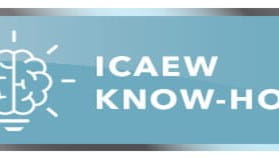Under the Modern Slavery Act 2015 (MSA) many organisations now have to prepare a section 54 Transparency in Supply Chains Statement (more usually known as a Modern Slavery Statement) This statement is designed to set out the actions taken to spot and mitigate the risk of modern slavery and human trafficking in an organisation’s business and supply chains.
But how can you spot the signs of modern slavery in supply chains or a business? Here are 10 questions you should ask to probe supply chains and business activities for the ‘red flags’ that may indicate modern slavery and human trafficking are present or could be present.
The attached guide provides more detail on why asking these questions can help. It is not a definitive guide and it does not constitute legal advice. If in doubt members are advised to seek specialist and independent legal advice.
Ten questions to ask
These questions can be asked of all businesses
- Is the business a known ‘risk’ business?
- Does the business trade with or operate in countries that are a known risk for modern slavery and human trafficking?
- Does the ‘Tone from the top’ suggest an awareness of the risk of modern slavery and a desire to address this risk
- Does the business map its supply chains?
- Does the business monitor its suppliers?
- Does the business model or the business policies and KPIs encourage slavery?
- Are there financial indicators that suggest there may be a risk of modern slavery?
- What are the Staffing and Recruitment policies?
- Are staff trained to spot slavery and do they know what the organisation’s polices on slavery are?
- Is there a whistleblowing policy in place that encourages staff to report suspicions or evidence of wrongdoing?
Download Red flags: The signs of Modern Slavery
PDF (256kb)
Read this ICAEW know-how guide providing 10 questions to ask to help identify modern slavery.
Download

